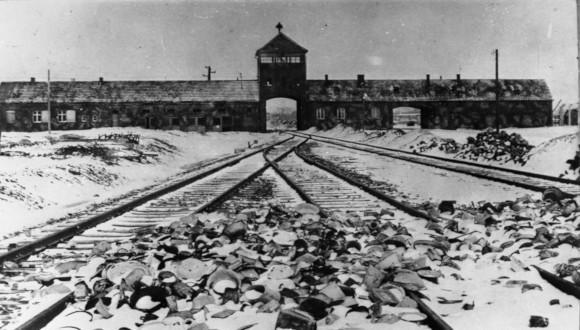International Holocaust Remembrance Day 27.01.2019
The escape from Auschwitz – the Vrba–Wetzler Report
The following document is a report on Auschwitz-Birkenau Death Camp. It was written in Žilina, Slovakia, between April 25th and 27th 1944, by activists of the Working Group (Pracovná Skupina, an underground Jewish organization in Slovakia dedicated to the aid and rescue of Jews from the Nazis). The report was based on the testimonies of Rudolf Vrba and Alfréd Wetzler, two young Slovak Jews who escaped from the camp three weeks earlier. They testified on the crimes they had witnessed in what today is known as the Vrba-Wetzler Report. They described events they had experienced after being imprisoned and sent to the camp: the tattooing of the number on their forearm, confiscation of their belongings by the guards and the way to the barracks. They described the structure of the camp, the prisoners' section, the staff residence area, as well as buildings still under construction. The report commented that the “purpose of this extensive planning is not known to us”. [We know now that these buildings were part of the preparations towards the arrival and the extermination of the Hungarian Jews]. Living and working conditions were thoroughly reported, in addition to the prisoners' mortality rate. The witnesses reported that in 1943 some 90,000 Jews were gassed every month.
Despite the fact that previous reports on the true nature of Auschwitz-Birkenau had already reached the free world, its role as the primary death camp in Europe became clear largely due to the Vrba–Wetzler Report. In May 1944, the report has reached Switzerland. Summaries of it were printed hundreds of times in Western newspapers and even broadcast by the BBC. It had considerable international impact; the American President Franklin Delano Roosevelt, as well as Pope Pius XII and King Gustaf of Sweden strongly urged the Hungarian leader, Miklós Horthy, to stop the deportation of Hungarian Jews. It was indeed successfully halted on July 7th 1944, thanks to international pressure, thus saving the lives of about 200,000 Jews (mostly from Budapest), who were supposed to be sent to the Auschwitz-Birkenau Death Camp.
The report did not specify, for obvious reasons, the names of the prisoners who escaped and found refuge in Slovakia. A copy of the report had reached the Wiener Archive in 1946.


